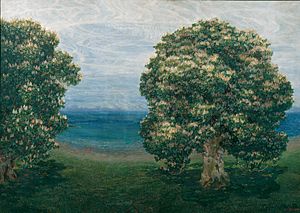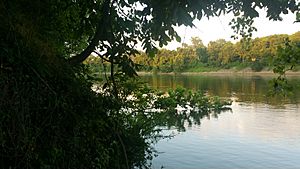Coe Ridge Colony facts for kids
The Coe Ridge Colony was a special community started in 1866 by Ezekiel and Patsy Ann Coe. After slavery ended in the United States, many formerly enslaved people needed a safe place to live and build new lives. The Coe Ridge Colony became a refuge for African Americans, Native Americans, and white women who faced difficulties in society. It was a place where people could escape challenges and try to create a better future for themselves.
This unique colony was located in the Southern Mountains of Kentucky. For almost 100 years, the Cumberland River was the main way to travel to and from the colony. Because of its isolated location, Coe Ridge Colony developed its own distinct culture. It was rare to find such a diverse mix of people living together during that time. By the 1930s, the colony started to connect more with nearby communities.
Since Coe Ridge Colony was very isolated and managed itself, there are no old newspapers or court records to tell us about daily life there. Most residents could not read or write, so they didn't keep diaries. The history of Coe Ridge Colony was mostly passed down through spoken stories from generation to generation, and also from people in neighboring communities who visited the colony.
Contents
The Story of Coe Ridge Colony
The area that became Coe Ridge Colony in Cumberland County, Kentucky was first settled by Ezekiel. He was part white, part African American, and part Native American. While living there, Ezekiel met Patsy, who had also been enslaved. Ezekiel and Patsy got married and had ten children.
After slavery ended in 1865 with the Thirteenth Amendment, Ezekiel and Patsy were able to reunite with their children. Their former enslaver, Jesse Coe, offered to sell them a part of his land. Ezekiel and Patsy bought 300 acres for six hundred dollars.
When they first bought the land, only sixteen people lived in Coe Ridge Colony. They faced a huge challenge: turning 300 acres of wild forest into a place where they could build a community. Luckily, the forest provided wood for building homes and was a key part of their economy. The colony also had many chestnut trees. These trees provided food and extra income for the community.
However, the chestnut trees became a source of disagreement between the Coe Ridge residents and their white neighbors. Both sides argued over who owned the chestnut orchards and who had the right to the money from them. Sadly, a chestnut disease in the early 1900s destroyed this important source of food and income. With their main income from wood and chestnuts gone, the community struggled to support itself. By 1958, the Coe Ridge Colony was mostly empty, and the once busy community was abandoned.
Challenges and Changes: 1885–1910
Living in Coe Ridge Colony often meant facing challenges related to race. These problems were especially noticeable during the middle years of the colony. The people of Coe Ridge Colony believed that neighboring white communities were responsible for many of these racial conflicts. In most cases, their belief was correct.
The Colony's Final Years: 1911–1958
A lack of money-making opportunities and ongoing difficulties from outside communities led to the decline of Coe Ridge Colony. Eventually, all the residents left. Today, only three houses remain on the 300 acres of Coe Ridge. The wilderness is slowly reclaiming them, and the colony's story is almost forgotten.
Why Coe Ridge Colony Was Important
The story of Coe Ridge Colony shows us that a community with people from different backgrounds could exist, even when racial tensions were very high. During this time, unfair treatment and violence against minority groups were common across the United States, especially in Kentucky.
The special mix of formerly enslaved African Americans, Native Americans, and white women was very rare. At a time when laws allowed "separate but equal" segregation, Coe Ridge Colony proved that different races could live together peacefully.
Even though this harmony didn't last forever, Coe Ridge Colony showed that people of different races could live together. The difficulties faced by the residents of Coe Ridge Colony also added to the many examples of unfair treatment against minority groups in the United States. These stories were important in the fight for racial equality and protecting minority groups from unfair actions.
The Coe Ridge Colony also inspired a TV show! It was the basis for the third season of FX Network's show Justified. The show featured a fictional isolated community in Harlan County, Kentucky where people lived hidden from criminals and the law. This fictional community often served as a safe place for white women who had nowhere else to go.



